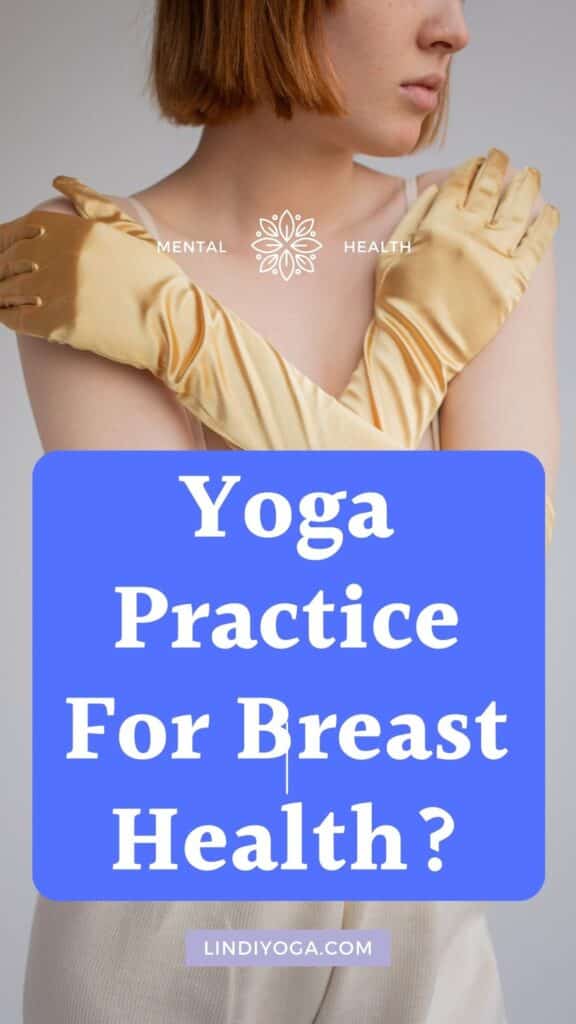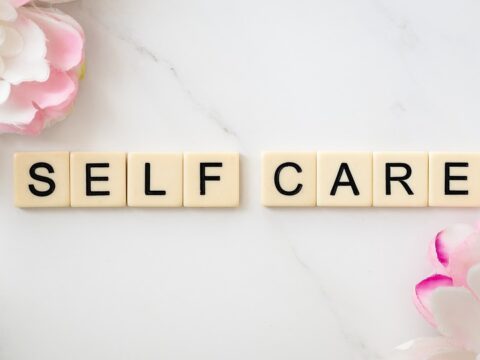Yoga practice can strengthen breast health. Breast cancer is one of the most common cancers in women, and about one in eight women will develop it during their lifetime. Yoga can help women stay healthy by improving circulation, strength and muscle tone.
A monthly breast self-exam is also recommended.
In his book, The Woman’s Yoga Book, Bobby Clennell, an experienced Iyengar yoga teacher, presents a comprehensive program of asanas and breathing techniques to help women strengthen their breast health.
He also discusses breast development, its hormonal, lymphatic, and mechanical systems, and describes some common breast conditions. The book also includes a variety of breathing techniques and asanas, including a series of seated postures.
Podcast
Research shows that yoga can improve the condition of breast cancer patients. It can also reduce symptoms of chronic stress, which can weaken the immune system, decrease appetite and interfere with sleep.
Yoga can also help women combat some of the most common problems women face, including high blood pressure and myofascial pain.
Yoga’s relaxation techniques have been shown to lower cortisol levels, a stress hormone secreted by the adrenal glands. This can improve patients’ immune function and reduce their risk of developing breast cancer and other cancers.
Gentle yoga is a good option for people with breast cancer and genesis. Experts recommend gentle exercise at any stage of the disease, but it’s important to talk to your doctor before starting an exercise program.
After surgery, women may have problems with their arms and shoulders, but an experienced yoga instructor will be able to adapt the poses to their needs.
Heart Chakra Chest Exercise
The heart chakra is located in the chest between the breasts and sternum and is associated with the energy of love, compassion and devotion.
This energy center balances the tension between the mind and the body. It is usually represented by a bright green light. The physical heart is located slightly to the left of the center.
The heart chakra is associated with heart health and many cancers. A simple heart chakra exercise can help you feel less overwhelmed and stronger.
Often the heart chakra is injured by trauma, such as death or divorce. It can also be damaged by abuse or neglect. This center is there to strengthen and heal us.
It teaches us compassion, forgiveness and unconditional love. Since our emotions revolve around the heart, they affect our physical body and our health. When the heart chakra is damaged, it leads to disease.
You can open the heart chakra with meditation and other methods. For example, wearing green clothes or being in a green nature environment can open the heart chakra.
Alternatively, you can use a mantra such as OM MANI PADME HUM to open the heart chakra.
You can also use gemstones that stimulate the heart chakra. Emerald, jade and rose quartz are some of the stones associated with the heart chakra.
The heart center plays an important role in awakening consciousness and promoting health. When it is in balance, it can promote a healthy immune system.
Yoga Poses for Chest Health
It is recommended that you consult a doctor before doing these exercises, especially if you are pregnant or have heart problems.
Child Pose (Balasana)
Child’s pose is a great resting position for the body and can be used for a variety of purposes. It can be used to relieve pressure on the legs and knees or for a deep hip stretch.
Some people find it somewhat uncomfortable due to the pressure on the thighs. If you find this pose uncomfortable, there are a few adjustments that will help you get the most benefit from it.
The first is to sit on your heels and stretch your arms out in front of you. Your hips should be slightly tilted back. Then, you should relax your upper body and let your shoulders droop down away from your ears.
You can also bend to the sides as you assume this position. This way, you can still get the full benefit of the child position.
You can also insert the child pose between a cow sequence and a cat sequence. It is important that you connect the child pose with the breath.
The Three-Part Breath (Dirga Pranayama)
The three-part breath is a breathing exercise in which you inhale deeply from the abdomen and ribs while stretching the chest and upper abdomen. Then exhale through the nose. Continue this cycle for five to ten breaths. The end result is a relaxing, deep breath.
This breathing exercise is also known as Dirga Pranayama. The main focus of this breathing exercise is to relax the center of the body and induce deep relaxation.
It is used by Navy Seals in life-saving situations because it allows them to switch from a fight or flight response to a recovery response.
The three-part breath can improve your physical and mental health and is often used at the beginning of a yoga class. Deep breathing not only calms the mind, but can also reduce stress hormones and anxiety.
Deep breathing can also improve lung function. By using this technique, you can focus more deeply on your body, reduce anxiety and live a longer life.
This breathing technique is the most advanced of all pranayama exercises and should not be done by beginners.
It is recommended that you consult a doctor before doing this exercise, especially if you are pregnant or have heart problems. It is also not recommended for people with respiratory conditions such as asthma.
Legs Up Against the Wall Pose (Viparita Karani)
In this pose, you will find your legs against the wall. This restorative pose affects your entire body. It opens up your shoulders and chest and stretches your spinal muscles. However, this pose can be painful, so be sure to warm up before attempting it.
Legs up against the wall pose is a gentle inversion of the body that helps release tension in the lower body. It is also beneficial for stress relief. It also improves circulation and relieves neck pain. You can perform this pose against a wall or a door.
The legs against the wall exercise is an effective way to relieve tension in the lower back and relax the lumbar muscles. The pose also relaxes the hamstrings and stretches the neck. It can also relieve headaches by restoring blood flow to the head.
In addition to reducing stress and aiding digestion, the legs-against-the-wall pose can also help improve your sleep habits.
Standing Forward Bend (Uttanasana).
Standing forward bend is a popular pose, especially in vinyasa yoga. It is performed at the beginning or end of a yoga practice and is a great way to stretch the hamstrings and calves. This pose is also considered a calming pose, often recommended for headaches and sinusitis.
When done correctly, this yoga pose can also help with stress, fatigue and mild depression. It also helps with blood circulation and improves flexibility of the spine.
It also stretches the hamstrings and thighs. It is usually performed as the third yoga pose of Sun Salutation. This asana can be performed alone or following other inversion postures.
Standing forward bend is not easy, but it can be challenging and effective for strengthening your back and spine. Gentle back stretches are especially helpful if you suffer from back pain.
Corpse pose (Savasana)
This powerful relaxation exercise is best done in a quiet room with no movement. The key to perfecting the dead pose is to keep your breath steady throughout the pose.
It is great for stress relief because it promotes mindfulness. It slows your breathing and lowers blood pressure, which counteracts the stress response. You can practice the corpse pose anywhere, but it is helpful to use a yoga mat for added comfort.
This yoga pose is safe for everyone, but pregnant women should modify it accordingly. During the third trimester, it is not recommended to lie on your back for extended periods of time.
However, you can safely practice the corpse pose by elevating your head and chest. You can also use a pillow or rolled-up blanket behind your arms.
The corpse pose can help relieve tension in your lower back, hips and knees. Not only does it relieve pain, but it can also relieve stress.
This pose is also called savasana and is a final relaxation pose in yoga class. Although it looks like a simple pose, it requires intense concentration and complete conscious relaxation. As with any pose, it can be challenging to master completely, regardless of your yoga experience.
Bridge Pose (Setu Bandha Sarvangasana)
Bridge pose is also known as Setu Bandha and creates a graceful, bridge-like shape. The term “bandha” is derived from the Sanskrit word “bondage” and describes the control of body parts in yoga poses. The pose has a positive effect on many health conditions.
Bridge pose is a great introduction to shoulder stand. It begins with you lying on your back with your knees slightly higher than your hips.
Place your hands palms down next to your body. Lift one leg at a time while keeping the other leg straight and relaxed.
Draw your tailbone toward your pubic bone and gently extend your heels back toward the floor. Keep your eyes closed and focus on your breath. You should be able to hold the pose for at least 30 seconds.
Bridge pose is a powerful yoga asana that stretches your back, shoulders and thighs. It also increases blood circulation in the arteries, which helps keep your heart and muscles healthy. It also improves the health of the digestive system.
Bridge pose is an excellent pose for beginners. This back-bending pose strengthens and stretches the spine and helps relieve lower back pain. It is also good for the endocrine and nervous systems.
Cow Face Pose (Gomukhasana)
The cow face, is an advanced hip opener from yoga. Cow Face Pose is a seated yoga asana that works on the inner tissues of the thighs. It also opens the meridians in the body. Although it is not for everyone, this pose can help people with lower back pain and tight hips.
However, pregnant women and people with stiff shoulders should perform this pose with caution. This is because it can cause severe sciatic pain and should only be performed with the help of a qualified instructor.
The cow face pose begins in a seated position with your legs stretched out in front of your body. Bending the knees and placing the feet outside the hips will distribute the practitioner’s weight evenly on both sitting bones.
The arms should be extended behind the back and bent at the elbows. Bend the elbows and clasp the hands near the center of the spine. The practitioner can then lean forward and rest on the inner thigh of the opposite leg.
If you cannot do this pose on your own, you should use a prop to help you get into the pose. The cow face pose is a great way to improve your posture and counteract the effects of computer work and prolonged sitting. It opens the shoulders, stretches the chest and lengthens the latissimus dorsi muscle.




